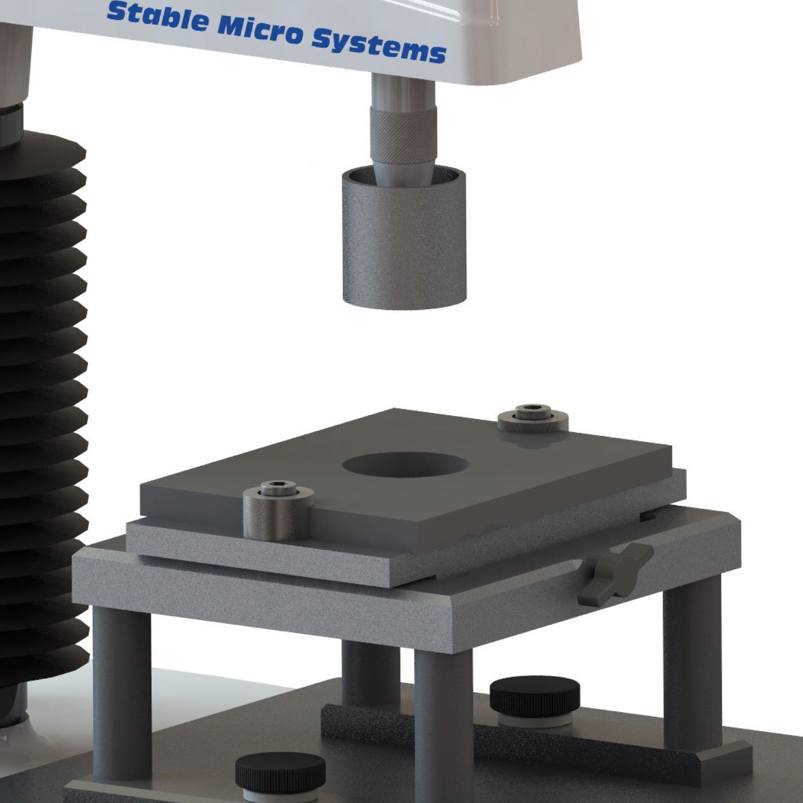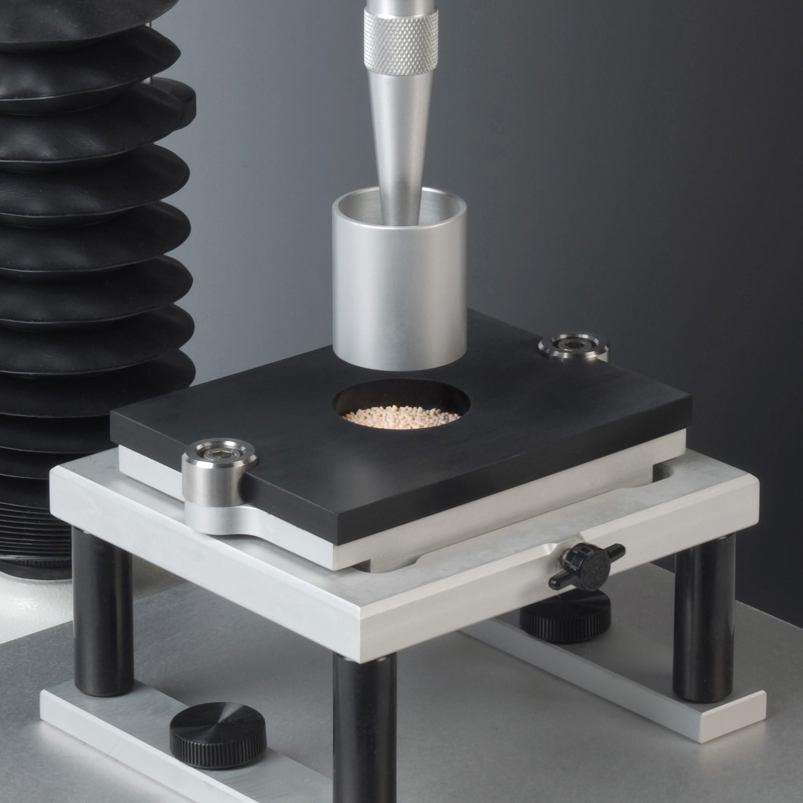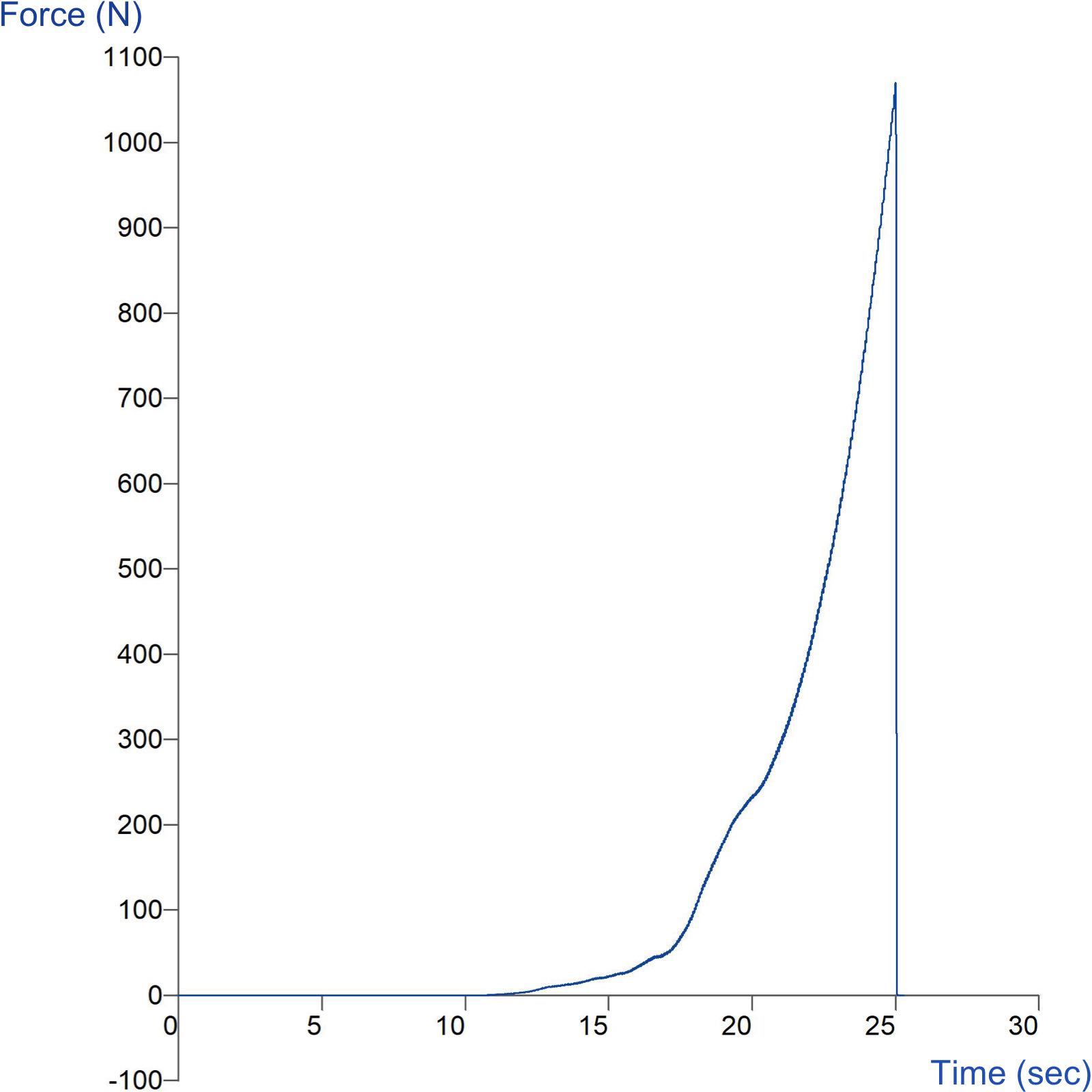Product overview
Granule compression tests provide an important measure of physical strength and breakdown characteristics. Granule hardness/compressibility testing is important to provide an indicator of the tabletting potential of some materials. Where granules are irregular in form, however, the measurement of single granules is discouraged as repeatability is compromised. In this instance, the testing of a fixed area of sample is advised to create an averaging effect over a larger number of granules and improve the quality of the results.
The Granule Compaction Rig provides a circular testing area into which the sample is deposited and contained before compression with a cylinder probe of similar diameter to the testing area. Normally, the maximum force and energy (area under the curve) are taken and used as an indication of hardness. The higher the force and energy required to compress, the more difficult it will be to form the granules into tablets at a later date.
How does the Granule Compaction Rig work?
Ideal sample form
Granular material.
Benefits and limitations
- Retains granular material for compression testing.
Technical information
Installation
Full installation instructions are provided within the Education Zone of the latest Exponent/Connect software version and on the technical information sheet accompanying this product.
Chemical compatibility
Stable Micro Systems probes and attachments are commonly made from four materials: anodised aluminium (AA6082 T6), stainless steel (316 T), Delrin (acetyl copolymer) and Perspex (polycarbonate).
In general use, probes and attachments made from these materials will be suitable for testing food products and inert non-food materials.
The four materials listed above are not universally resistant to all types of chemicals and as such the compatibility of the probe/attachment material with the product (to be tested) must be established to prevent damage to the probes and attachments. If the compatibility of the product with the probe is unknown to the customer then the chemical information about the product (Material Safety Data Sheet or Product Data Sheet) should be submitted to Stable Micro Systems. Stable Micro Systems will then assess the suitability of the probe/attachment material for use with the product and advise accordingly. If this advice is not sought then Stable Micro Systems will not accept liability for probes/attachments damaged by chemical attack from the product being tested.
Cleaning and maintenance
All probes and attachments may be cleaned in warm (or hand hot) water using a mild detergent. A soft brush may be used but abrasive cleaning aids should be avoided. Stable Micro Systems products should not be microwaved or cleaned in a dishwasher.
Screw threads should be lightly lubricated after drying using a light lubricant, e.g. petroleum jelly, mineral oil. This will aid the fitting and unscrewing of the item. Each component of a probe or attachment should be wrapped separately when stored, to avoid scratching or chipping. This will safeguard against any unnecessary damage to the accessory.



